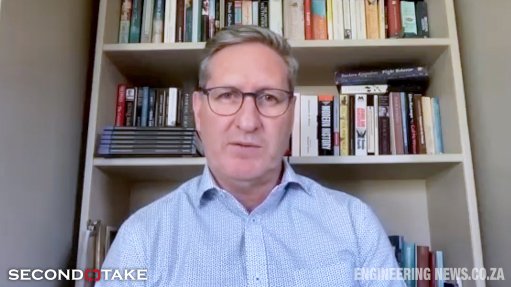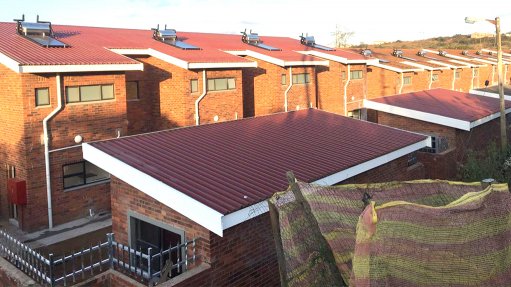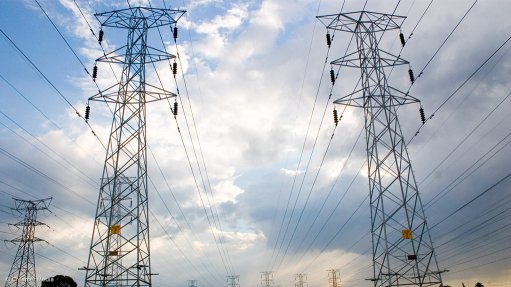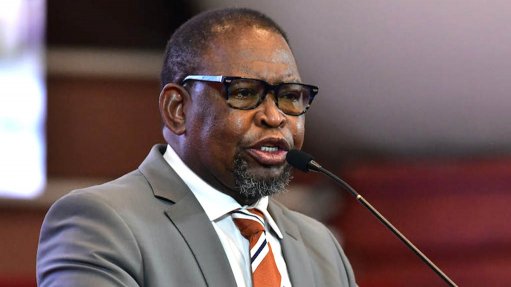The circular economy: A critical player in unlocking African economic growth and prosperity
This article has been supplied as a media statement and is not written by Creamer Media. It may be available only for a limited time on this website.
Improving livelihoods within planetary boundaries requires a new paradigm of opportunity that profits people and nature
By Catherine Wijnberg and Bridget Wijnberg
Africa is on a trajectory of explosive population growth with immense economic, environmental and social challenges if we continue business as usual.
By the late 2060s, sub-Saharan Africa will be the most populous of the eight geographic regions, ballooning to 3.44 billion inhabitants by the end of the century. Ever-depleting resources will risk biodiversity collapse and entrench the continent in an increasingly desperate situation of poverty, with sub-Saharan Africa projected to have 86 percent of the world’s extreme poor by 2050.
Alongside this, the continent will account for the largest percentage of young people. Yet currently one in six African youth are in wage-paying employment, juxtaposed against an annual deficit of 7.3 million jobs.[3] Not surprisingly, one in five youth see entrepreneurship as their only option.4,5
Economic growth might be seen as the solution, but the planet’s finite resources cannot sustain the current linear model of make-use-dispose. Something exceptional is required. The needs of both the people and the planet call for an urgent shift to a more resilient and sustainable model.
To lift people out of the poverty cycle we need locally-driven economies that promote economic growth, generate wealth and create those 7.3 million jobs per year. If this growth is driven with the current waste creating linear business model, this would generate a massive ecological footprint. The negative effects of which could wipe out the benefits of those gains.
To solve unemployment and poverty at this scale will require a different strategy. A circular-based economy has the mechanisms to meet the economic and employment needs and reduce negative environmental impact.
Circular business models design out waste, keeping products in use for longer and re-using raw materials to eliminate waste, water, energy, materials and pollutants at source, and reduce total waste to landfill. They create the competitive advantage of a more efficient business model, present opportunities for bottom-up innovation, stem the onslaught of biodiversity loss and address climate change.
They can be incorporated at a grassroots level with the baseline of nil access to resources, either financial or material, to make a viable living for underserviced rural and township communities.
Or at the higher level, industry disruptors have the potential to create system-level change by taking advantage of new technologies in the circular economy and embracing Africa’s IT transition, such as blockchain, to track resources, build trust, and create financial transparency.
Onboarding
For broadscale uptake there first needs to be a basic understanding of the opportunities that circular business offers. Perhaps the most effective way is to shine a light on relatable role models within communities.
The survivalist sector of the population considers circularity a luxury item, yet it has the potential to be their path to a legitimate future. For example, Alfred Esiang stumbled into waste management through his garden service when he kept being asked to remove waste. His side hustle, which began from that first request with two bicycles, is now a thriving entity with its own fleet of cars and property, and an accredited training development centre that specializes in artisan development. Artisanship in this space extends from the pavement sold curios to the breathtaking high-end designs of award-winning recycle artist Heath Nash.
Whilst some still see the circular economy as an unnecessary distraction as citizens embrace a mindset of zero waste, the opportunities become clear. Industry is showing the way by embedding it into their model. Agripreneurs are creating efficiencies in the farm to market delivery chain by incorporating tech such as e-commerce platform Agrikool, whilst Suame Magazine Automotive Cluster in Ghana has spawned the largest repair and manufacturing cluster in Africa.
As with any shift in mindset, repeated exposure to a positive narrative is necessary to gain any traction.
Making the transition
For entrepreneurs eager to transition, the mechanisms to achieve this may feel overwhelming with a genuine lack of know-how or paralysis for want of perfection. It’s important to acknowledge that any step in the right direction is better than inaction.
Addressing the basic knowledge gap, Youth Business International[8] has launched their trial of a global circular business startup toolkit which embraces all industries and will form a free resource accessible for all. But designing it is often complex, and what might be considered sustainable in South Africa for example, might not align with German legislative framework.
However, for capacity building at the scale needed for country-level impact governments too should be onboarding new thinking and providing training and education of the public sector to ensure that policymakers have the right tools at hand. Bold futuristic governments such as Rwanda have already activated circularity as a key policy, providing the lead for other African governments to follow suit.
Resource rich
Access to raw materials is often limited by its traditional definition. Yet by identifying the value in somebody else’s discarded “waste value chain” and re-imagining it as a rich resource and a “materials value chain” can solve the issue of excess production, and instead create an endless cycle of re-use and regeneration.
This is how Mo’s Crib, a sister duo, established their model that now retails décor baskets in New York woven from old PVC waterpipes reclaimed from landfills and building sites around South Africa. Other businesses are similarly breaking the mould from the agriculture sector to manufacturing, the possibilities are endless.
Finance
Access to finance is critical for scalable business growth and there is much need to demystify understanding of the circular economy here too. The financial industry’s perception that the circular economy is high-risk (only 3% of green funds are invested in Africa) is a particular hindrance to small business wanting to invest in new closed-loop technology.
Currently in the developmental stage, The Green Tech Exchange is aimed at closing this gap between green innovation and finance by matchmaking verified innovators with investors, whilst enabling new methodologies, providing entrepreneurs with knowledge resources and stimulating market growth opportunities.
Investment Readiness also forms a key component of Fetola’s Circular Economy Accelerator (a mentorship and training programme for small businesses) giving entrepreneurs clarity on how to communicate their value proposition to investors.
Collaboration
A pivot on such a monumental scale cannot occur without global uptake and participation. Closer cross-functional, multi-stakeholder collaboration and knowledge sharing is vital to accelerate the transition. Responding to this, The World Circular Economy Forum in Rwanda led to the establishment of two platforms to connect business, government, researchers and civil society, both the Circular South Africa (CSA) and the African Circular Economy Network (ACEN) Zambian Chapter.
The European Union (EU)’s own Circular Economy Action Plan acknowledges that their ambitions to reach global sustainability objectives cannot be achieved in silo and so the EU places heavy emphasis on international cooperation building stronger partnerships with Africa through mechanisms, such as the 2023 Lusaka conference ‘Implementation of Circular Economy regulations in the SADC region’, to establish joint public-private solutions and drive change.
To drive change and unlock the continent’s potential, the circular economy is an imperative. It is not possible to decouple human well-being from nature and the essential services it provides us and for this reason there can be no lasting improvement of livelihoods if increased economic activity is based on the current unsustainable models. Built from the bottom up, the circular economy is a powerful alternative that can foster greener, more resilient value chains, address biodiversity loss and create a brighter future for Africa and its citizens.
Comments
Announcements
What's On
Subscribe to improve your user experience...
Option 1 (equivalent of R125 a month):
Receive a weekly copy of Creamer Media's Engineering News & Mining Weekly magazine
(print copy for those in South Africa and e-magazine for those outside of South Africa)
Receive daily email newsletters
Access to full search results
Access archive of magazine back copies
Access to Projects in Progress
Access to ONE Research Report of your choice in PDF format
Option 2 (equivalent of R375 a month):
All benefits from Option 1
PLUS
Access to Creamer Media's Research Channel Africa for ALL Research Reports, in PDF format, on various industrial and mining sectors
including Electricity; Water; Energy Transition; Hydrogen; Roads, Rail and Ports; Coal; Gold; Platinum; Battery Metals; etc.
Already a subscriber?
Forgotten your password?
Receive weekly copy of Creamer Media's Engineering News & Mining Weekly magazine (print copy for those in South Africa and e-magazine for those outside of South Africa)
➕
Recieve daily email newsletters
➕
Access to full search results
➕
Access archive of magazine back copies
➕
Access to Projects in Progress
➕
Access to ONE Research Report of your choice in PDF format
RESEARCH CHANNEL AFRICA
R4500 (equivalent of R375 a month)
SUBSCRIBEAll benefits from Option 1
➕
Access to Creamer Media's Research Channel Africa for ALL Research Reports on various industrial and mining sectors, in PDF format, including on:
Electricity
➕
Water
➕
Energy Transition
➕
Hydrogen
➕
Roads, Rail and Ports
➕
Coal
➕
Gold
➕
Platinum
➕
Battery Metals
➕
etc.
Receive all benefits from Option 1 or Option 2 delivered to numerous people at your company
➕
Multiple User names and Passwords for simultaneous log-ins
➕
Intranet integration access to all in your organisation


















